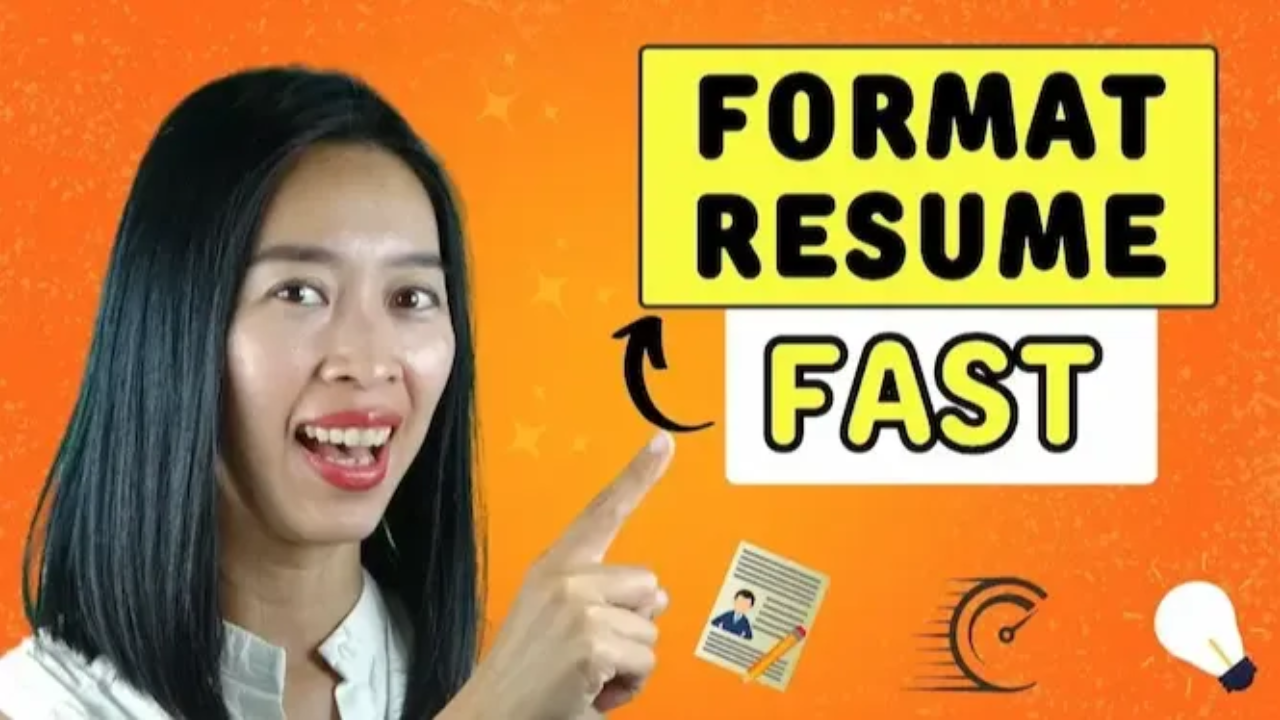How to Format a Resume: Quick Guide for a Clean, Job-Ready Layout

Struggling with resume formatting?
You’re not alone. Many job seekers spend hours tweaking fonts, margins, and layouts — and still end up with a resume that looks messy or outdated. Worse, some designs get rejected by Applicant Tracking Systems (ATS) before a human ever sees them.
In this guide, I’ll walk you through exactly how to format your resume quickly, professionally, and in a way that works for both hiring managers and ATS. No graphic design skills needed — just clear, modern structure that gets you noticed.
Step 1: Choose Readable Fonts That Pass the 6-Second Test
Recruiters skim resumes in about 6 seconds, so make it easy for them.
- Use sans-serif fonts like Calibri, Verdana, Arial, or Tahoma. These are clean and easy to read on screens.
- Avoid overused fonts like Times New Roman or any decorative fonts.
- Keep body text between 10–12 pt (e.g., Verdana works at 10 pt; Calibri might need 11 pt). Headings can be 1–2 sizes larger.
- Maintain consistency: same font family and size rules throughout.
Pro tip: A clean, readable font shows professionalism and helps guide the reader’s eye — a small detail that can make a big difference.
Step 2: Use a One-Page Layout (Unless You Have 10+ Years of Experience)
If you have less than a decade of experience, a one-page resume forces you to focus on the most relevant information.
- Stick to 1-inch margins (or slightly narrower, but not cramped).
- Keep plenty of white space — crowded resumes are harder to read and feel overwhelming.
- Use left alignment for text. Skip “justify” because it creates uneven spacing.
Step 3: Structure Your Resume for Easy Scanning
A proven, ATS-friendly structure looks like this:
- Header – Name, contact info, LinkedIn URL
- Summary – 2–3 lines explaining your value and what you bring
- Skills – 6–8 keywords that match the job posting
- Experience – Reverse chronological, using bullet points
- Education – Degree, institution, year (skip the year if it’s long ago)
- Optional – Projects, Certifications, Volunteer Work
Keep section headings in UPPERCASE and bold so hiring managers can jump to what they want quickly. A dark blue heading can also help them stand out.
Step 4: Master Bullet Points — Action + Result
Bullet points keep content easy to digest and create natural white space.
Each bullet should:
- Start with a strong action verb
- End with a result or measurable impact
✅ “Created a training program that reduced onboarding time by 30%”
❌ “Responsible for staff training”
Aim for 1–2 lines per bullet, up to 3 for major achievements. Too much text in a single bullet makes it harder to scan.
Step 5: Avoid ATS Traps
ATS software struggles with certain elements. To make sure your resume can be scanned and read properly:
Do NOT use:
- Tables or columns
- Headers and footers
- Text boxes or graphics
- Icons or photos
These can cause your resume content to be missed entirely by the system.
Step 6: Use Formatting to Guide the Reader
Strategic use of bold and italic can draw the reader’s eye to the most important details — your achievements and skills, not just your responsibilities.
For example:
- Bold the names of companies and job titles
- Bold the first few words of your key achievements
- Italicise dates or locations if you want them visually distinct but not distracting
Step 7: Keep It Consistent
Inconsistent formatting — like mixing fonts, sizes, or bullet styles — signals a lack of attention to detail. This is a quick red flag for recruiters.
Before sending your resume:
- Do a full scan for spacing, alignment, and style consistency
- Ask a friend to check for small errors you might miss
Step 8: Margins & White Space Matter
Many job seekers try to cram in every detail by reducing margins and font size. But this backfires — a dense wall of text is exhausting to read.
Instead:
- Keep margins comfortable
- Use bullet points and paragraph breaks
- Let the resume “breathe” visually
Step 9: The Fastest Way — Use a Proven Template
If formatting feels like a hassle, start with a template that’s already ATS-friendly and recruiter-approved. This lets you focus on your content instead of fiddling with design.
You can grab my Skilled Job Starter Kit, which includes:
- A clean, ATS-friendly resume template
- A LinkedIn checklist to boost your profile visibility
- Interview answers that build confidence and get results
👉 Get it free here: theaho.co/free
FAQs
What is the best resume format for job seekers?
A one-page, reverse-chronological layout with clear headings and bullet points works best for most job seekers.
Can I use Canva or a graphic resume?
Not for online applications — ATS often can’t read them. Only use creative designs for in-person hand-ins or creative roles.
How do I format my resume if I have no experience?
Highlight education, skills, projects, volunteer work, and a strong summary showing transferable strengths.


